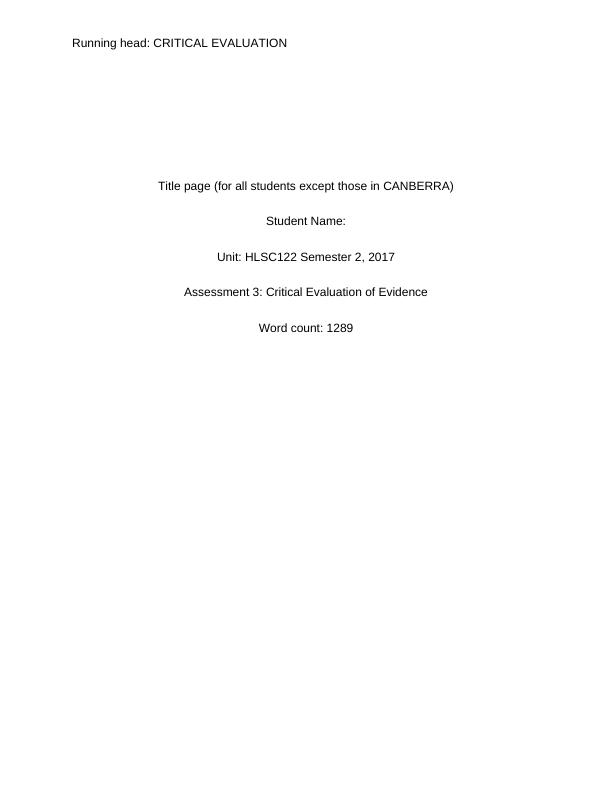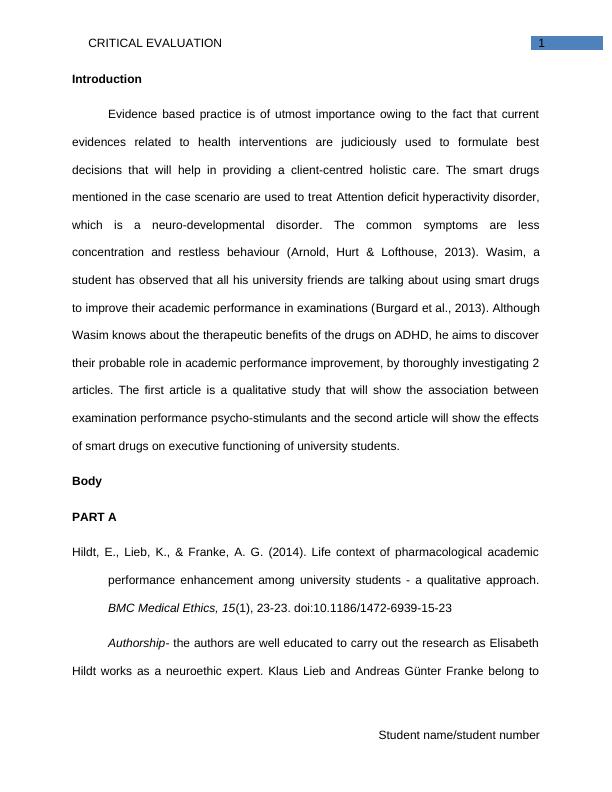Critical Evaluation of Evidence
9 Pages1986 Words63 Views
Added on 2020-04-13
About This Document
CRITICAL EVALUATION 1 CRITICAL EVALUATION Title page (for all students except those in CANBERRA) Student Name: Unit: HLSC122 Semester 2, 2017 Assessment 3: Critical Evaluation of Evidence Word count: 1289 Introduction Evidence based practice is of utmost importance owing to the fact that current evidences related to health interventions are judiciously used to formulate best decisions that will help in providing a client-centred holistic care. Wasim, a student has observed that all his
Critical Evaluation of Evidence
Added on 2020-04-13
ShareRelated Documents
End of preview
Want to access all the pages? Upload your documents or become a member.
HLSC122 Inquiry in Health Care Assignment
|11
|2491
|111
HLSC122 Inquiry in Health Care : Assignment
|11
|2478
|170
Nursing Assignment | Health Case Study
|12
|2674
|129
HLSC122 Inquiry in health care: Assignment
|8
|1987
|263
Critical Evaluation of Evidence Essay
|9
|2316
|110
HLSC122 Critical Evaluation of Evidence
|11
|2908
|88



